What to do if there is foam or water remaining on the door or door seal of my Panasonic Washer?
- GgthompsonSep 12, 2025
If foam or water remains on the door or door seal of your Panasonic Washer, wipe it away before taking out the laundry.
What to do if there is foam or water remaining on the door or door seal of my Panasonic Washer?
If foam or water remains on the door or door seal of your Panasonic Washer, wipe it away before taking out the laundry.
Why does water drain out during a wash in my Panasonic NA-120VX7 Washer?
If water drains out during a wash cycle in your Panasonic Washer, it could be due to the foam detection function, where excess foam triggers water drainage and fresh water intake to remove the foam. Also, even if water is directly supplied to the drum, it may drain away without building up.
Why is no water going into my Panasonic Washer?
No water may be entering your Panasonic Washer because the tap is turned off, the water supply is disrupted, the water supply hose is frozen or the water supply filter may be blocked.
Why does the drum stop and rotate several times during the spin process of my Panasonic Washer?
During the spin process, the drum of your Panasonic Washer may stop and rotate several times because the appliance detects an unbalanced load and automatically tries to correct it. The laundry may also be too light; try adding one or two bath towels.
What happens if there is a power cut during operation of my Panasonic NA-120VX7 Washer?
If there is a power cut during operation of your Panasonic Washer, the operation will resume from the point it had stopped when the power is recovered (Auto restart).
What happens if the circuit breaker trips during operation of my Panasonic Washer?
If the circuit breaker trips during operation of your Panasonic Washer, figure out the cause and deal with it, then reset the breaker. Operation will resume from the point it had stopped when the power is recovered (Auto restart).
Why does my Panasonic Washer make a fan rotation sound?
The fan rotation sound in your Panasonic Washer is normal. The fan cools electric parts.
Why does fabric softener overflow in my Panasonic NA-120VX7 Washer?
Fabric softener might overflow in your Panasonic Washer if the amount used was above the “MAX” line in the detergent drawer, or if the detergent drawer was closed too strongly, causing some of the softener to spill.
Why does the displayed remaining time change on my Panasonic Washer?
The displayed remaining time on your Panasonic Washer is only a guide and is corrected continually. The remaining time may increase if the rinse or spin settings are changed or if the appliance detects an unbalanced load and makes an adjustment accordingly.
Why is my Panasonic NA-120VX7 Washer displaying an unclear display?
The unclear display on your Panasonic Washer may be caused by the appliance being in a brightly lit or sunlit area.
Covers family safety, fire prevention, and electrical shock risks.
Importance of proper grounding to prevent electric shock.
Guidelines for handling malfunctions and repairs.
Tips to prevent injuries and burns during operation.
Covers checks, first use, laundry prep, sorting, and stain treatment.
Safe loading practices to prevent damage.
Explains types of detergents, fabric softener, and bleach usage.
Specific detergent requirements for the prewash function.
Steps for preparing, starting, and adjusting wash.
How to add optional functions during the wash cycle.
Specific advice for delicate and bedding programmes.
Guidance on using special programmes.
How to modify water temperature and water level for wash cycles.
How to select processes and use prewash.
Using extra rinse for better detergent removal and sterilising laundry.
How to disable the buzzer and the Active Foam function.
Activating/deactivating child lock.
Cleaning filter, thawing hose.
How to clean the appliance exterior, drum, and detergent drawer.
Procedure for cleaning the drain filter.
Buttons, door, odour, water supply, and levels.
Spin interruptions, foam problems, noise, and display issues.
Where NOT to install the appliance.
Guidelines for fitting the machine.
Safely moving the appliance and attaching the base plate.
Removing bolts and ensuring the appliance is level.
Maximum lengths and placement for hoses and power cord.
Procedures for connecting water supply and drain hoses.
Verifying parts, stability, and hose connections.
Key technical data and power supply requirements.
Covers family safety, fire prevention, and electrical shock risks.
Importance of proper grounding to prevent electric shock.
Guidelines for handling malfunctions and repairs.
Tips to prevent injuries and burns during operation.
Covers checks, first use, laundry prep, sorting, and stain treatment.
Safe loading practices to prevent damage.
Explains types of detergents, fabric softener, and bleach usage.
Specific detergent requirements for the prewash function.
Steps for preparing, starting, and adjusting wash.
How to add optional functions during the wash cycle.
Specific advice for delicate and bedding programmes.
Guidance on using special programmes.
How to modify water temperature and water level for wash cycles.
How to select processes and use prewash.
Using extra rinse for better detergent removal and sterilising laundry.
How to disable the buzzer and the Active Foam function.
Activating/deactivating child lock.
Cleaning filter, thawing hose.
How to clean the appliance exterior, drum, and detergent drawer.
Procedure for cleaning the drain filter.
Buttons, door, odour, water supply, and levels.
Spin interruptions, foam problems, noise, and display issues.
Where NOT to install the appliance.
Guidelines for fitting the machine.
Safely moving the appliance and attaching the base plate.
Removing bolts and ensuring the appliance is level.
Maximum lengths and placement for hoses and power cord.
Procedures for connecting water supply and drain hoses.
Verifying parts, stability, and hose connections.
Key technical data and power supply requirements.
| Load Type | Front Load |
|---|---|
| Capacity | 12 kg |
| Color | White |
| Energy Rating | A+++ |
| Voltage | 220-240 V |
| Frequency | 50 Hz |

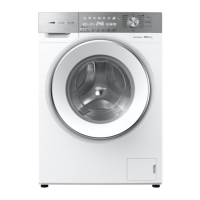
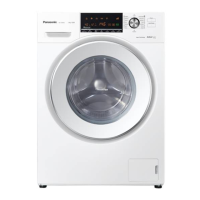
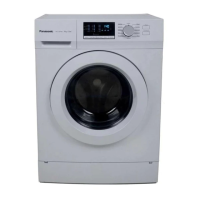
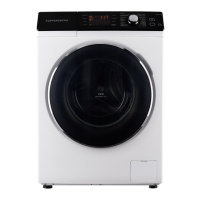
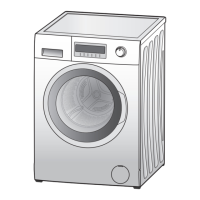



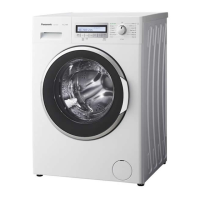
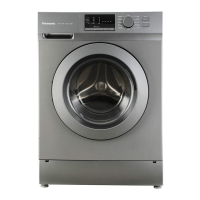
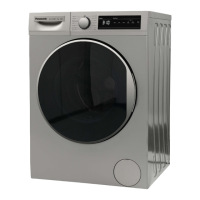
